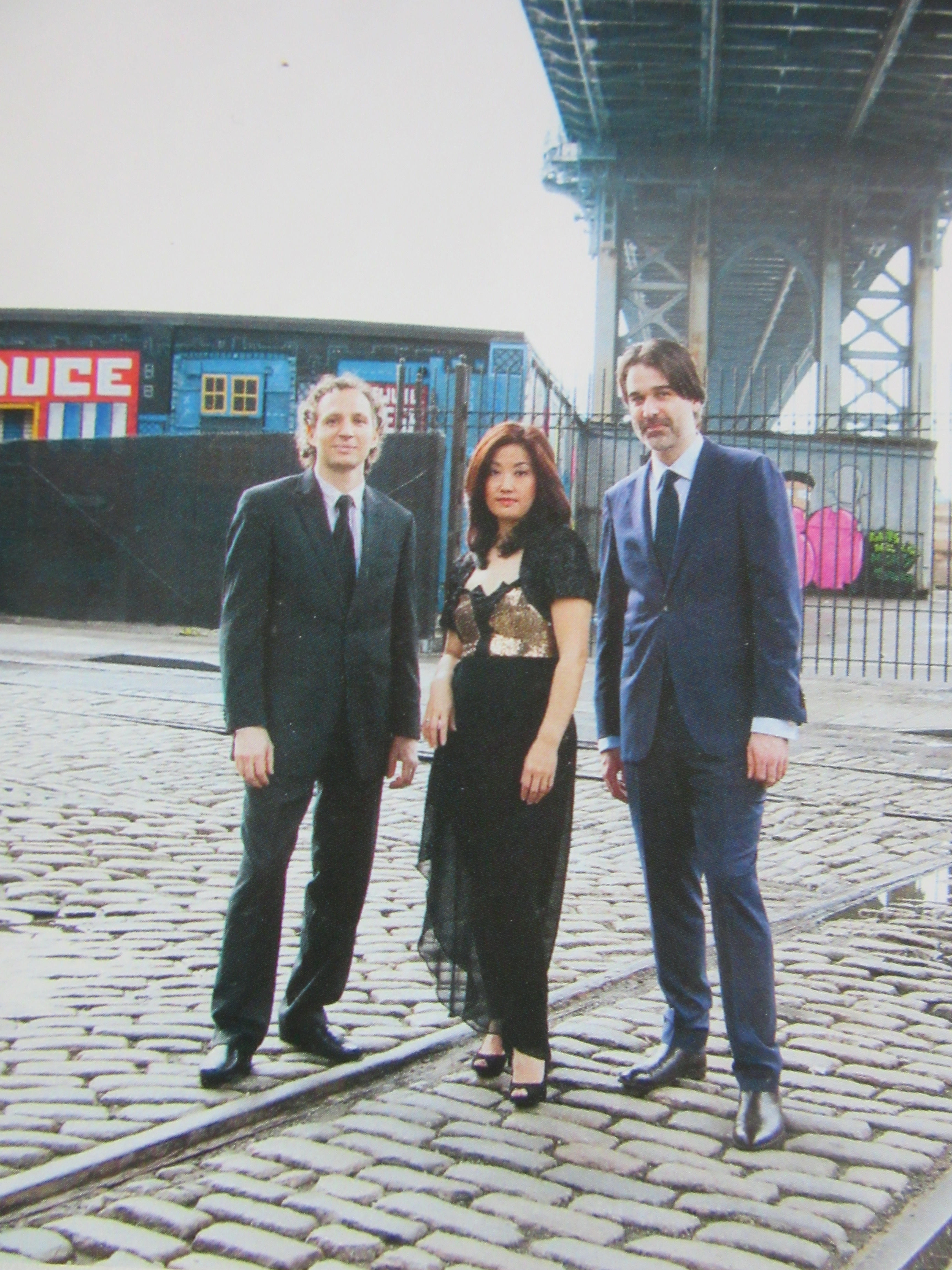TANGO FOR IMPORT is, as a tango album, remarkably literate. The liner notes by Adam Tully are, to begin with, unusually astute, capturing the arterial flow of a long tradition. The CD ranges from early 20th century tangos to two of his own compositions, which could, on a casual listen, have been composed decades ago. There is a good deal to be learned from his notes, including where the phrase “Tango for Import” comes from: it is a play on “Tango for Export,” an industry term for tangos thought to be viable outside of Argentina. The album’s name, as well as that of Importango, the trio whose music it presents, is a not-so-subtle challenge to the assumptions of the “Tango for Export” concept.
It struck me on Saturday at the CD release concert in Manhattan that the musicians on the album – Machiko Ozawa (violin), Octavio Brunetti (piano), and Tully (guitar) – have, when you hear them together, an almost classical seriousness. If there is such a thing as chamber tango, TANGO FOR IMPORT, with its Baroque precision of craft and the Rococo featheriness of its melodies, is surely what it sounds like. The tragic drama of the beat, so reflexively expected of tango, is distinctly muted. The melodrama of loss and desperation, pressed by an intricacy that is both musical and emotional, gives way to the spry, the sweet, and the wistful.
There are thirteen tracks on TANGO FOR IMPORT, of which I will describe only a couple, and it is consistent with Importango’s sensibility that the selections tend toward the buoyant, light, and lively. The repertory is subtly rethought, even as fidelity is paid to its essence. This is partly a matter of instrumentation, especially when the numbers are well-known in orchestral versions or as canciones for singers. Most of the arrangements are by Brunetti, whose delicacy on the piano has a lot to do with the album’s tone and character; his liking for film scores can be heard in opening phrases that could easily accompany the title sequences of this or that movie.
Sometimes the arrangements reveal if not restore something essential to the original compositions. It would be easy to assume that “Quejas de bandoneón,” written by Juan de Dios Filiberto in 1918, would miss something without recourse to the instrument named in the title. In fact, however, it was composed for piano. Importango’s version is revelatory: the instrument is heard despite its absence, in the piano the compression of the keys, in the violin the swell of the bellows, in the pluck of the guitar the tap of fingers and knuckles on its armature.
“Quejas de bandoneón” is one of the more dramatic tracks on the album and in that sense complementary to the rest of it. “Flor de lino,” a tango vals that softens its sorrow with a touch of sentiment, is more typical. It was a staple of the trio’s five years at Brooklyn’s Pane e Vino, which has live tango every Thursday. Importango’s version makes audible the wandering mind of the dreamer, its detours into memory, its backward meander from the reluctant course of a life. It conveys the romantic longing of the song’s lyrics with pure instrumental affect. For those who know the lyrics, which of course we don’t hear, it is a double memory, of the song and the tale that it tells.
TANGO FOR IMPORT lives and works, for all of its sweetness and bouyancy, in the full surround of the human condition. In fact it is all about loss, a document, as tango so often is, of the left behind and remembered. Octavio Brunetti, originally from Rosario, Argentina, died in New York City on August 29, 2014. He is remembered on this album, which was, thankfully, fully recorded. That, and the concert at St. Peter’s Church at which Ozawa and Tully were joined by friends of the band to recap its repertory, makes his loss no more bearable but, in letting us hear his work anew, a little more calculable.
TANGO FOR IMPORT, from Panoramic Recordings, is available from iTunes and Amazon. The header image is of the album notes cover; photo © 2014 Vik Machanda.
